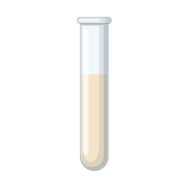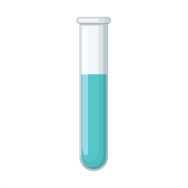
A Hormone Imbalance In Your 30’s, 40’s, and 50’s

Estradiol

Progesterone
Measured Together
The ratio to each other indicates an imbalance

Testosterone
Reproductive Age Women
Imbalance
High Estradiol
Low Progersterone
May Cause
- Endometrial Hyperplasia
- Pre-Menstrual Symptoms
- Fibrocystic Breasts
- Uterine Fibroids
OLDER WOMEN
Imbalance
HIGH ESTRADIOL
LOW PROGERSTERONE
Can lead to cancers of the uterus and breasts, & insulin resistance
LOW ESTRADIOL
LOW PROGERSTERONE
Signals onset of Menopause
May Cause
- Weight Gain in Hips & Thighs
- Fibrocystic & Tender Breasts
- Uterine Fibroids
- Water Retention
- Thyroid Problems
- Hot Flashes, Night Sweats
- Vaginal Dryness
- Sleep Disturbances
- Foggy thinking
- More Rapid Skin Aging
- Bone loss
ALL WOMEN
Imbalance
HIGH TESTOSTERONE
Often caused by ovarian cysts
LOW TESTOSTERONE
Often caused by excessive stress, medications, contraceptives, and surgical removal of the ovaries.
May Cause
- Excessive Facial & Body Hair Acne
- Oily Skin and Hair
- Loss of libido
- Thinning Skin
- Vaginal Dryness
- Loss of Bone & Muscle Mass
- Depression, Memory Lapse
MEN
Imbalance
HIGH ESTRADIOL
LOW TESTOSTERONE
Can be caused by high cortisol levels, high estrogen levels.
May Cause
- Feminizing effects
- Breast enlargement
- Leads to Suppressed
- Testosterone Levels
- Hot flashes
- Increased fatigue
- Sleep disturbances
- Feelings of depression
- Difficulty concentrating
A comprehensive hormone panel blood test will determine if your symptoms are the result of a hormone imbalance.
A hormonal imbalances happens when there is too much or too little of a hormone in the bloodstream. Since they play an essential role in the body, even minimal hormonal imbalances can create side effects and cause issues throughout your body.
Hormones are chemicals that are produced by glands in your endocrine system. Hormones travel through your bloodstream to organs and tissues, delivering signals to tell your organs what to do and when to do it. It’s important to note that your hormones are important for regulating major bodily processes, so a hormonal imbalance can affect a wide range of bodily functions including the following:
-
- Metabolism and appetite
- Heart rate
- Sleep cycles
- Reproductive cycles and sexual function
- General growth and development
- Mood and stress levels
- Body temperature
Men and Women experience hormone imbalance symptoms in similar ways, but at differing milestones. Women can experience imbalances in estrogen and progesterone levels, while men are more likely to experience imbalances in testosterone levels. Your symptoms of a hormonal imbalance really depend on which glands and hormones are being affected. Women naturally experience several periods of hormonal imbalance throughout their lifetime, including during Puberty, Menstruation, Pregnancy, Childbirth, Perimenopause, Menopause, and Post-menopause. Men also experience natural periods of hormonal imbalance during their lifetime. including during Puberty and Aging.
Men
- Men in their 30’s: Will see subtle changes including challenges of maintaining muscle, and gaining weight is typically indicative of the slow decline of testosterone.
- Men in their 40’s: Deficiencies become noticeable including lack of motivation, lower energy, and less reliable sexual function. Insomnia is present along with mood changes.
- Men in their 50’s: Testosterone is likely much lower than optimal levels and Estrogen is increasing resulting in belly fat, lack of energy, and loss of focus and concentration.
Women
- Women in their 30’s: Will see subtle changes including the challenge of maintaining muscle, and weight gain reflecting the slow decline of testosterone.
- Women in their 40’s: Deficiencies are now very noticeable including lower energy, insomnia, and changes in mood.
- Women in their 50’s: Menopause statistically occurs between the ages of 51 to 53 which can be accompanied by a wide range of symptoms including vaginal dryness, hot flashes, chills, night sweats, sleep problems, mood changes, and weight gain.